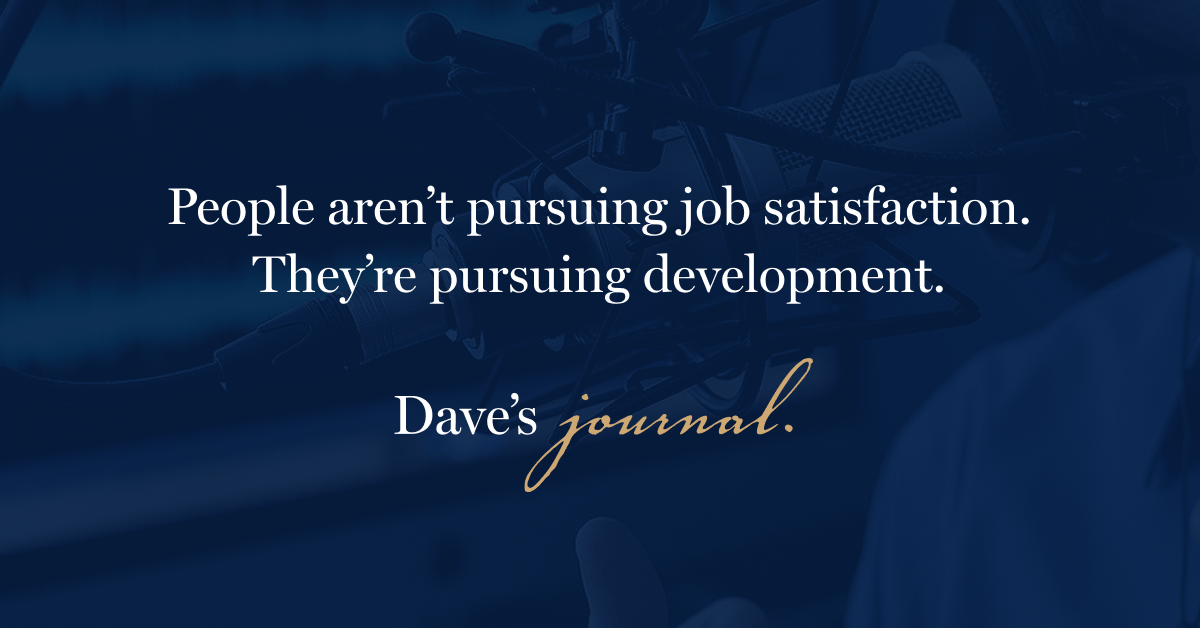Most of us have had that manager that annoyed us to all ends with micromanagement. They were in our face every three hours about a task because we weren’t quite doing it right and it had to be done their way.
As a result, it’s been my experience that most managers have some level of healthy concern about not becoming that person. That’s a good place to be.
Until it’s not.
I actually find the opposite problem more often the issue. Out of concern to not become a micromanager, people tack completely to the other extreme and don’t manage much at all.
Occasionally, a superstar employee comes back constantly with amazing work. More often, people miss the mark — especially those who don’t have as much experience.
Yet, we’re hesitant to step in, even if it means we’ve got to pick up the pieces ourselves later. After all, we’re supposed to empower people to take ownership over their work and have autonomy and all those things Daniel Pink taught us* about how to motivate people, right?
This is where a distinction is critical. There’s a difference between autonomy and independence.
Independence means we hand off something and do little to nothing to connect with people before they complete the work.
Independence is a wonderful place to get to. It’s awesome to be able to deputize an employee to do great work and then get back a result that’s way better than anything you would have done.
However, that’s not the place start a working relationship. And it’s certainly not the place most of us are with with many of the people we lead.
Autonomy, in contrast, gives a person the right level of ownership over their work. I also allows for active coaching and management as they learn new skills, make mistakes, and come up short.
Micromanagement is bad, sure. What’s worse? The other extreme. Little management at all.
I have worked for micromanagers and I have worked for people who have not engaged much. The first is more uncomfortable, but having done both, I’m sure which is worse. At least with a micromanager, you learn something and know where you stand, annoying as it may be.
Effective managers give people the right amount of autonomy and are there along the way to help them stay on track and support them.
This begs the question:
Alight, but how do I determine the right level of autonomy?
That’s different in every situation. These two variables will help you decide what makes sense:
First, consider experience. How successfully has this person executed this work before? If they’ve never done anything close to what you are asking them to do, both they and you should expect that you’ll check in a lot more often.
Of course you can provide autonomy in these situations, it’s just less autonomy than if they had done the work a dozen times before. That’s because this is the point where they want (and probably expect) more time and direction from you.
The second variable is to consider the visibility or importance of the work. If the work is for an internal customer that is less sensitive about it being done perfectly, that lends itself to more autonomy. If the work is central to a deliverable for a top client, that lends itself to less autonomy.
These two variables change with every task or project. Even if you have a very experienced employee who normally you don’t check in with often, you’re going to define less autonomy up front if they are working on the most important deliverable for the organization’s #1 client.
The key is that you as the manager discuss up front, before the work even starts, how much autonomy they have in the context of their experience and the visibility of the work.
Micromanagement happens when people don’t expect it. When you’ve agreed in advance to check in daily, that’s not micromanagement. It’s you and them doing what you already said you would do to help them get better.
In Gallup’s most recent book, It’s the Manager*, the message is clear:
Millennials and Generation Z are no longer pursuing job satisfaction. They are pursuing development.
Good managers work with people to provide the right autonomy along with regular, consistent coaching, so people get what they need — and already want.
Dave's Journal is available by audio on Apple Podcasts, Google Podcasts, Overcast, Stitcher, and Spotify.





